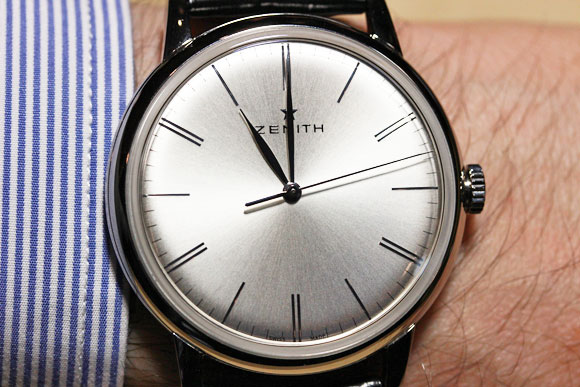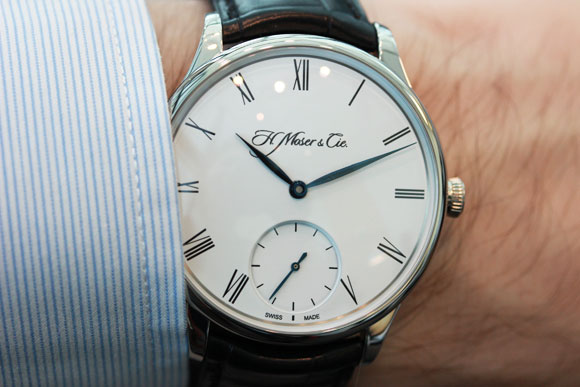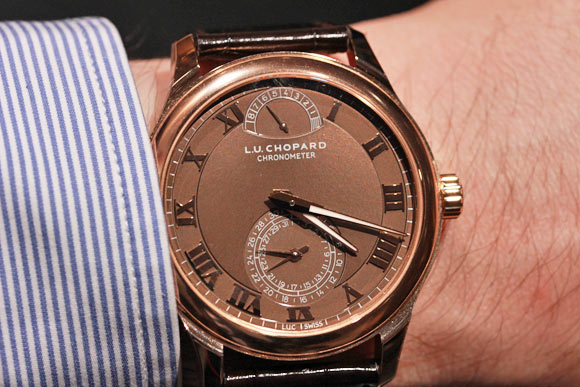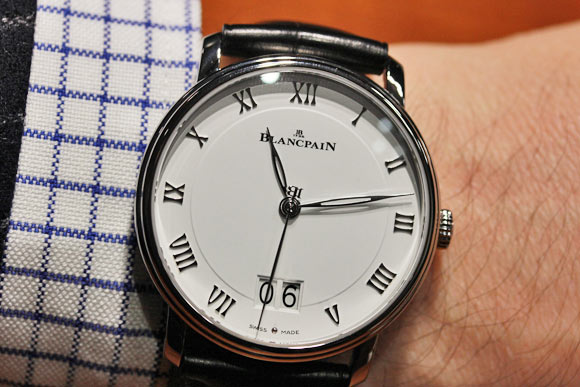Chic, dressy style is a fundamental exercise in watchmaking as in all other fields. When it comes to watches, this involves a subtle play on simplicity. Sometimes, doing an absolute minimum is enough to create a maximum effect. Such is for example the approach taken by Zenith with the 6150, named after the new calibre launched by the Manufacture and endowed with a 100-hour power reserve. A logo, supremely slim hour-markers, slender hands and tone-on-tone shades of grey: the recipe definitely works to perfection.

Laurent Ferrier also applies it, and indeed systematically so across its collections. The only fanciful touch in which it is indulging is the launch of an attractive new case named Galet Square. This is an evolved version of its Galet (pebble-shaped) watch, featuring subtly stretched corners. The design work on the arrow-type hour-markers and lance-shaped hands is as beautiful as ever, resulting in the epitome of wristworn elegance.

Based on these fundamentals, chic style can incorporate certain additions or enrichments, provided they are sparingly distributed. H. Moser & Cie inaugurates a new type of dial. The Venturer Small Seconds adopts a white face that is finely grained and punctuated with Roman numerals: three entirely novel features for this line.

Stepping it up a notch in terms of ornamentation while remaining essentially demure, Girard-Perregaux has opted for the smallest men’s size of its 1966 case, at 38 mm. It frames a sunburst guilloché dial that catches the light while not overdoing it, discretion being a natural companion of authentic chic.

If complications are to be added, however small, elegance demands rigorous geometrical balance. Playing with the respective proportions takes on crucial importance in this respect. Jaquet Droz handles that of its Grande Seconde Deadbeat in an extremely subtle manner. The extremely large date at 6 o’clock (in fact almost in the centre) has no graduated track, which keeps its weight down on the dial. Conversely, the off-centred hours and minutes do feature one, complemented by Roman numerals, which compensates for its small size.

Chopard opts for a more clean-cut symmetry with the L.U.C Quattro. Its new tobacco-toned dial places the power reserve at 12 o’clock opposite the small seconds ringed with a concentric date display at 6 o’clock.

6 o’clock is a strategic location on the dial. 12 o’clock is reserved for the brand or its logo. The semiotics of watches suggests that the upper section is left free to signify the lightness of the object. Blancpain has decided to add a twin aperture. Its Villeret Grande Date comes in the colour conveying supreme elegance: pure white.

Openworked hands add a lighter touch, as do the brand-signature waisted Arabic numerals. But the 6 o’clock space remains bare beneath the date. A gold hour-marker stud does not fill this space. It is ideally suited to a small seconds display, and that is exactly what Hermès has done with the 6 o’clock area on its Slim. Nonetheless, the most striking aspect of this model is the extraordinary work on the font of the Arabic numerals that are large yet light. This is naturally due to their thickness, but also to the broken lines that mean they are half suggested and interrupted without disturbing their balance. Equilibrium is indeed the keynote and it is definitely not confined to symmetry.










